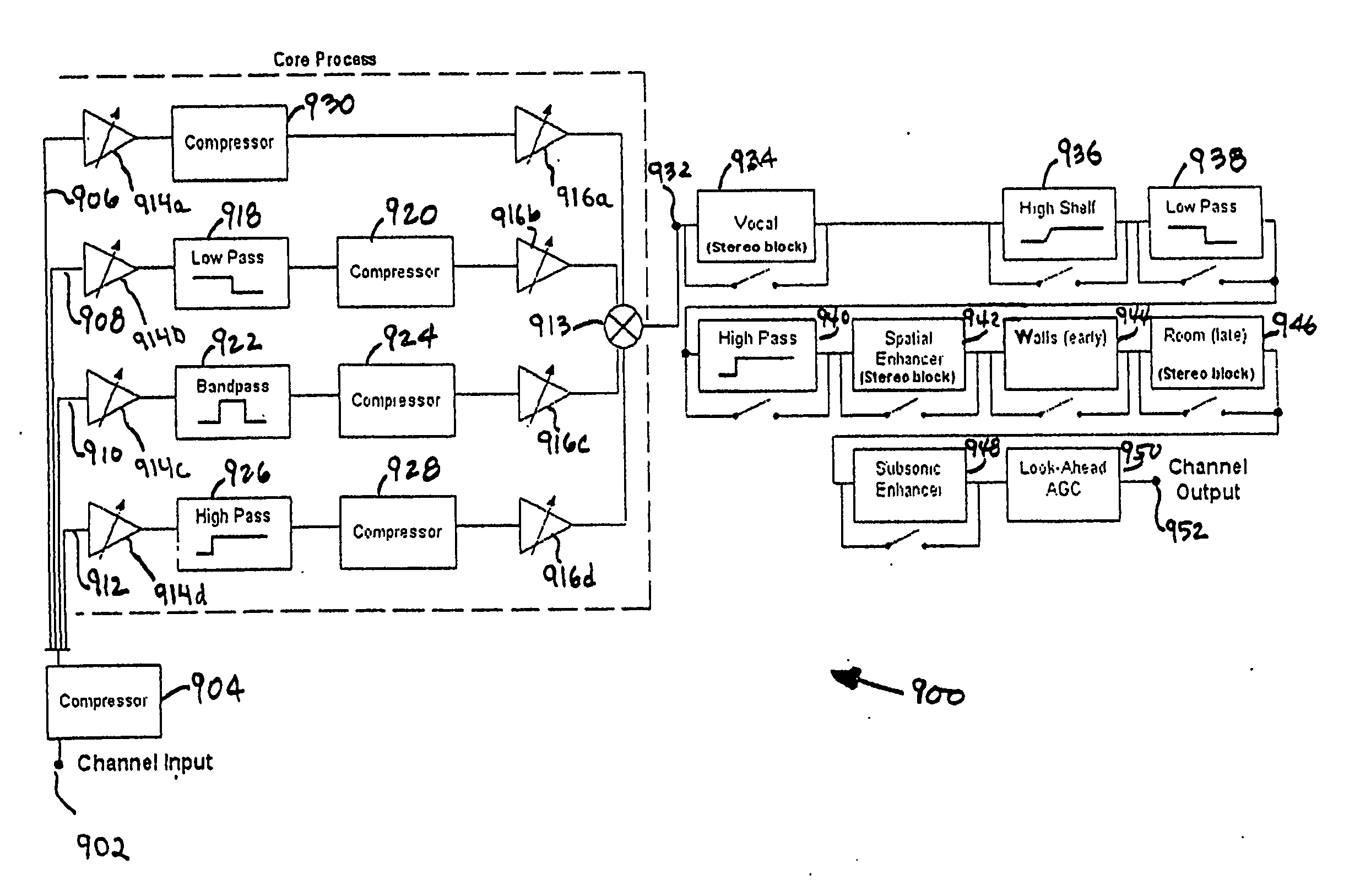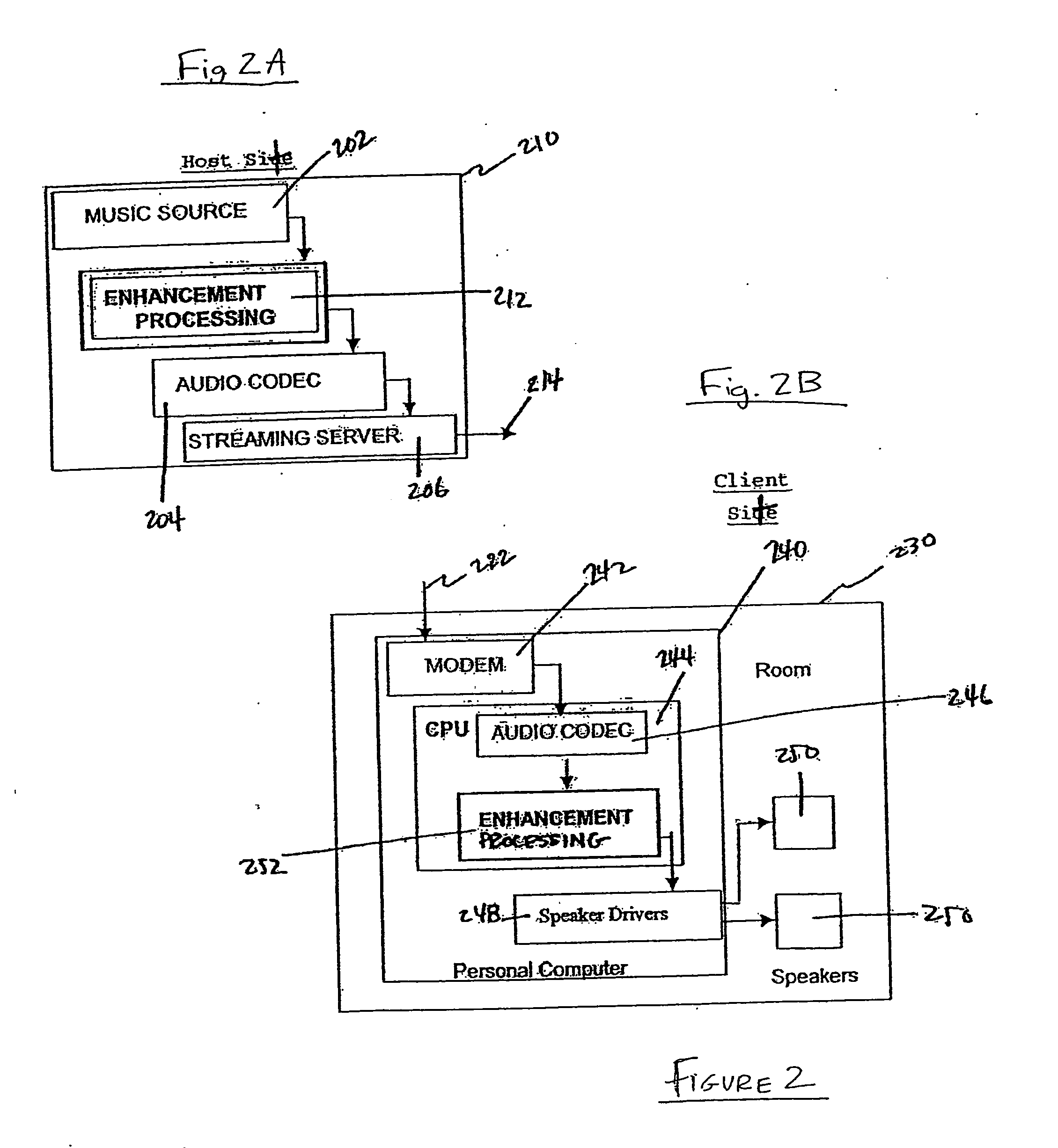Acoustical virtual reality engine and advanced techniques for enhancing delivered sound
a virtual reality engine and audio technology, applied in the field of advanced processing techniques for enhancing delivered audio signals, can solve the problems of reducing the time required to compress the file, affecting the quality of the audio signal, and affecting the listening experience of users, so as to enhance the audio signal, enhance the streaming audio signal, and enhance the audio signal
- Summary
- Abstract
- Description
- Claims
- Application Information
AI Technical Summary
Benefits of technology
Problems solved by technology
Method used
Image
Examples
Embodiment Construction
[0042] Techniques for enhancing sound delivered to a user via a limited bandwidth transmission system, or from a compressed digital file, are disclosed herein. And more particularly, what is disclosed are techniques for client-side enhancement of sound files, which can be delivered as streams or as downloads via the Internet or other means to client devices such as CD, portable players, set-top boxes and the like, and which can be played over a computer-based sound system having limited fidelity and in an environment with ambient noise or other poor acoustical attributes. Also disclosed are techniques for compressing an audio signal at speeds faster than real-time so that the audio signal can be broadcast over a limited bandwidth connection. Other embodiments include client-based applications wherein an audio signal is enhanced after it is decompressed, such as a streaming media receiver or an electronic audio file player (i.e., an MP3 player). Accordingly, the disclosed method / syst...
PUM
 Login to View More
Login to View More Abstract
Description
Claims
Application Information
 Login to View More
Login to View More - R&D
- Intellectual Property
- Life Sciences
- Materials
- Tech Scout
- Unparalleled Data Quality
- Higher Quality Content
- 60% Fewer Hallucinations
Browse by: Latest US Patents, China's latest patents, Technical Efficacy Thesaurus, Application Domain, Technology Topic, Popular Technical Reports.
© 2025 PatSnap. All rights reserved.Legal|Privacy policy|Modern Slavery Act Transparency Statement|Sitemap|About US| Contact US: help@patsnap.com



